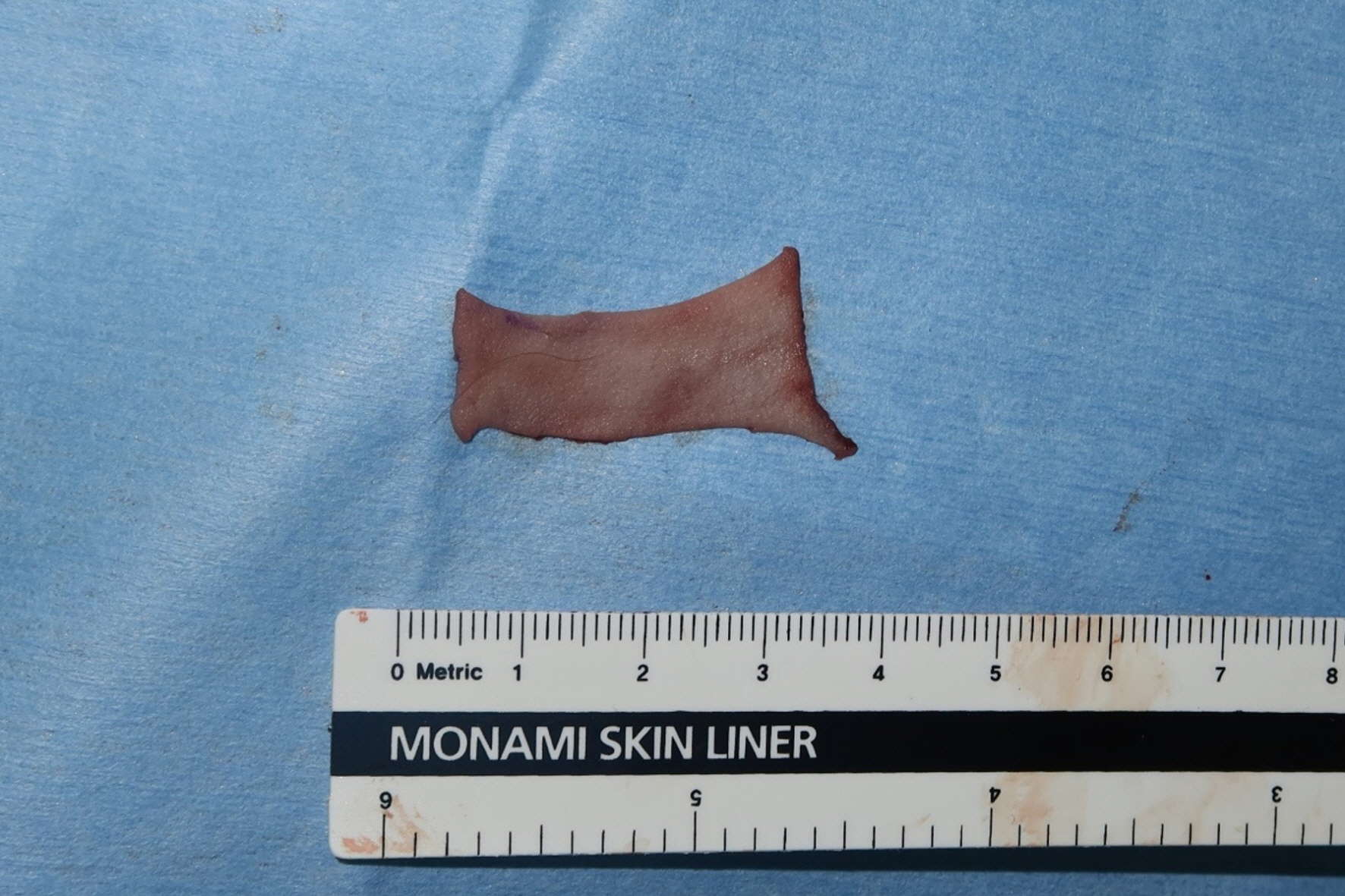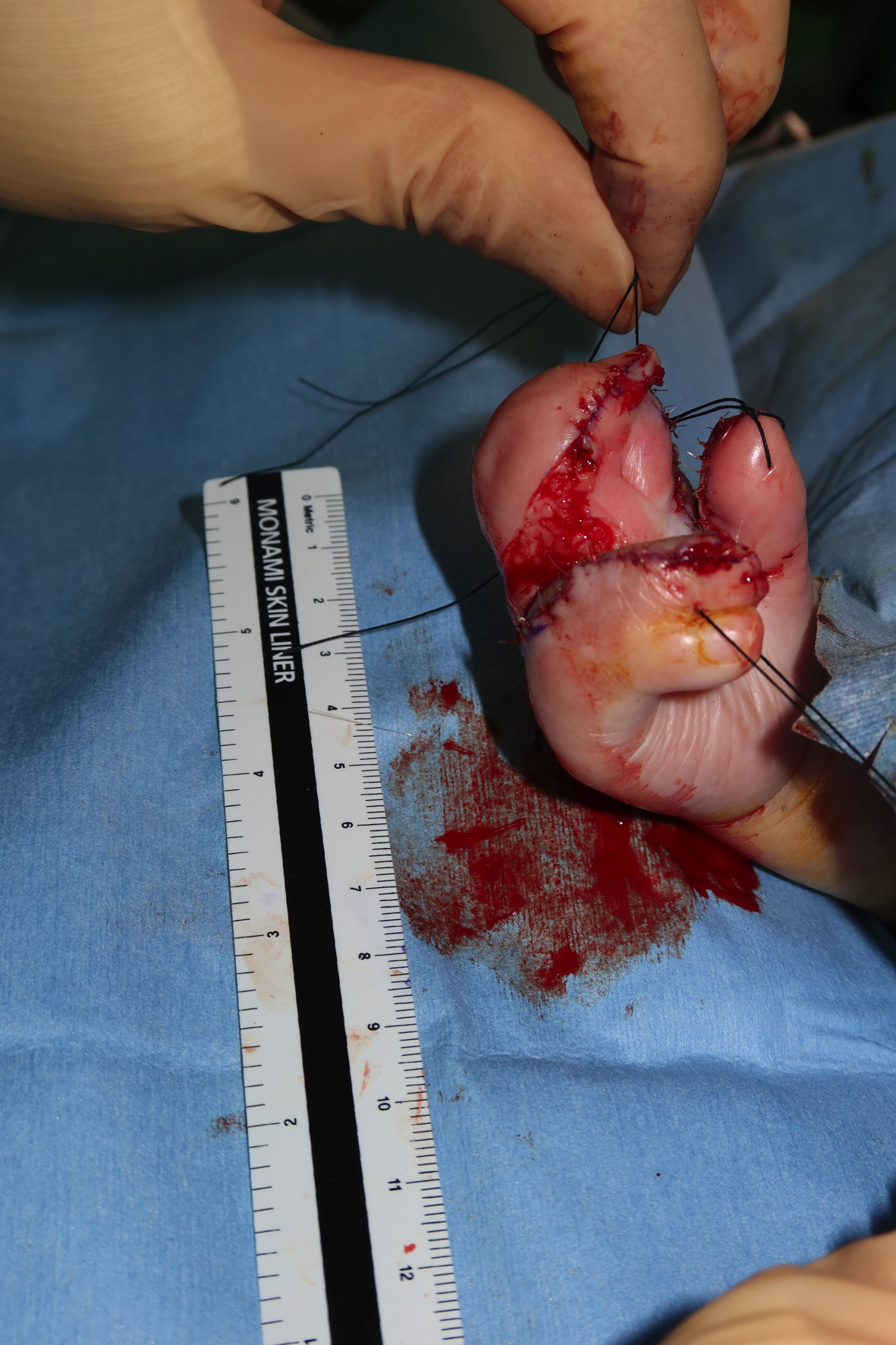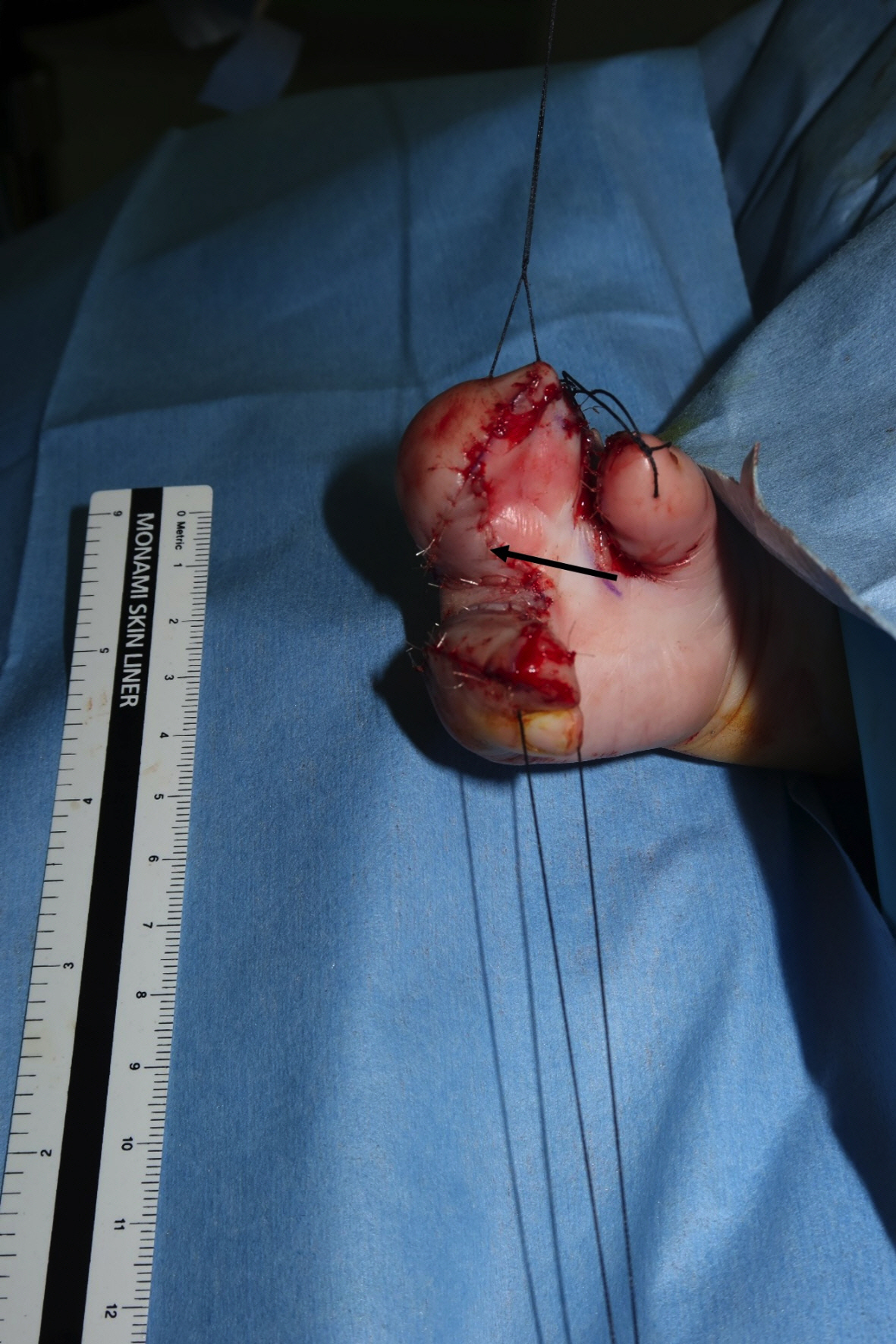Arch Hand Microsurg.
2023 Mar;28(1):39-42. 10.12790/ahm.22.0050.
Isografting of full-thickness skin to treat syndactyly in monozygotic twins with Apert syndrome: a case report
- Affiliations
-
- 1Department of Plastic and Reconstructive Surgery, Seoul National University College of Medicine, Seoul, Korea
- KMID: 2540029
- DOI: http://doi.org/10.12790/ahm.22.0050
Abstract
- Patients with Apert syndrome require repeated limb surgery due to their complex deformities. In this study, a full-thickness isograft was performed for the division of Upton type III hands in identical twins with Apert syndrome. Nine-month-old identical twins presented with Apert syndrome characterized by craniosynostosis, severe syndactyly of the hands and feet, and dysmorphic facial features. Division and full-thickness skin grafting were performed. The siblings were operated consecutively on the same day. Following surgery for the younger sibling, there was an excess of graft left unused. In contrast, the older sibling required an additional skin graft of 1 × 1 cm. Full-thickness skin was successfully transferred between the twins without any rejection as of a 2-month follow-up. Thus, full-thickness skin isografting between monozygotic twins with Apert syndrome was successfully implemented.
Figure
Reference
-
References
1. Fearon JA, Podner C. Apert syndrome: evaluation of a treatment algorithm. Plast Reconstr Surg. 2013; 131:132–42.2. Raposo-Amaral CE, Raposo-Amaral CA, Garcia Neto JJ, Farias DB, Somensi RS. Apert syndrome: quality of life and challenges of a management protocol in Brazil. J Craniofac Surg. 2012; 23:1104–8.3. Upton J, McNamara CT, Ali B, Nuzzi LC, Taghinia AH, Labow BI. Distraction lengthening of the Apert thumb. Plast Reconstr Surg. 2022; 149:691e–699e.4. Day E, Kearns PK, Taylor CJ, Bradley JA. Transplantation between monozygotic twins: how identical are they? Transplantation. 2014; 98:485–9.5. Niederhuber J, Feller I. Permanent skin homografting in identical twins. Arch Sur. 1970; 100:126–8.6. Herron PW, Marion LF. Homografting in treatment of severe burns using an identical twin as a skin donor. Pac Med Surg. 1967; 75:4–10.7. Turk E, Karagulle E, Turan H, et al. Successful skin homografting from an identical twin in a severely burned patient. J Burn Care Res. 2014; 35:e177–9.8. Ahmed R, Giwa L, Jordan N, Dheansa B. The helpful twin: Skin graft donation in a challenging burn case. JPRAS Open. 2020; 27:58–62.9. Coombs CJ, Mutimer KL. Tissue expansion for the treatment of complete syndactyly of the first web. J Hand Surg Am. 1994; 19:968–72.10. Işik S, Selmanpakoğlu N, Aşikel C. The use of tissue expanders in syndactyly repair. Eur J Plast Surg. 1996; 19:225–8.







